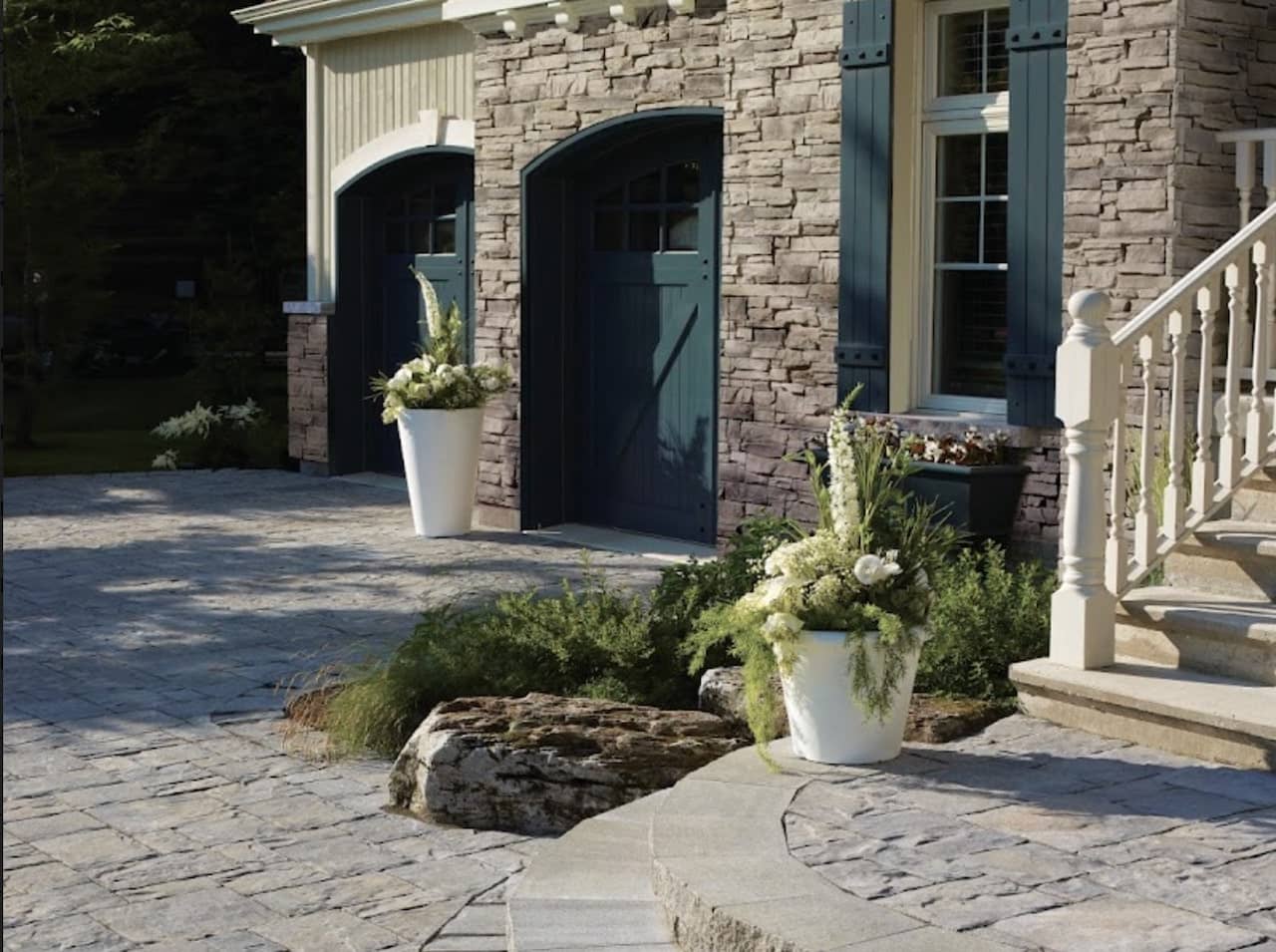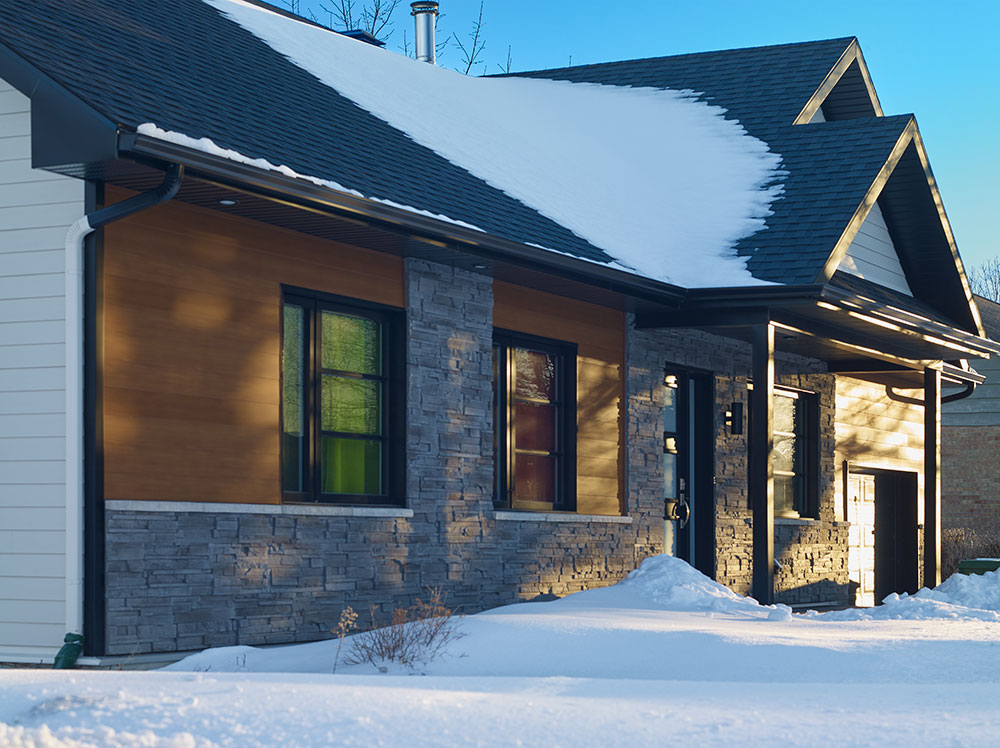
Stone Veneer Around Garage Door: Ideas & Installation Tips
January 7, 2022
Select the Best Siding for Cold Climates: Homeowner’s Guide
February 10, 2022Adding stone siding to your home is a fantastic way to increase the curb appeal of your property! Nevertheless, many homeowners hesitate to implement a dry stack stone wall with mortar because they’re unsure of the pros, cons, and alternatives facing them.
No need to put off this home improvement project any longer. If you’re ready to upgrade your property, we’ve laid out everything you need to know about dry stack vs. mortar joint construction and how you can get the most out of your stone renovation project.
What Is a Dry Stack Stone Wall With Mortar?
What is dry stack stone, anyway? Dry stone stacking is a building technique that entails stacking stones atop one another without visible grout connecting them.
The lack of visible mortar is what makes it a “dry stack.” Some grout may be used to connect stones when necessary, but the stack’s exterior is “dry” and devoid of visible connections. The stones appear to naturally rest on one another!

What Is Wet-Laid Stone?
Wet-laid stone is a building technique that entails laying stones directly on top of concrete and mortaring them together. Wet mortar is poured between stones to connect them — this process is referred to as “mortar jointing.”
This more refined aesthetic is popular on back patios, as the “wet” concrete or mortar creates a smooth surface between the stones themselves. While some “dry stack” stone walls might contain a little bit of mortar cleverly hidden from view, all wet-laid stone will have deliberately-visible mortar connecting the various stones.

Understanding The Dry Stack vs. Grout Debate
Generally, stone masons remind property owners that the choice between dry stack vs. grout is both a matter of aesthetic preference and engineering requirements.
Wet-lay is generally more durable, and is usually chosen by homeowners who will be laying stones down on a pre-existing bed of concrete. It takes more time, materials, and expertise to finish, however.
Dry stack stone walls are considered more affordable and easier to produce. Homeowners with limited budgets or a need to complete a project as soon as possible will find that dry stack stone renovations aren’t as costly or time-consuming as wet-laid stone. A dry stack stone wall with mortar that’s barely visible also has a rustic look.
Natural stone used for dry-stacking is often supplemented with fine sand or gravel between the stones to prevent movement. Over time, this sand or gravel may erode away and be in need of replacement, especially if the dry stack stone wall or patio is power washed regularly. Even wet-laid stone walls may need eventual touching up, too, though their sturdier construction ensures they endure for longer.
Mechanically Fastened Joints: The Speedy and Strong Choice
In addition to dry stacking and wet-laid stone, there’s a DIYer-proof solution created by the engineering and construction experts at Be.On Stone. Be.On Stone’s realistic stone veneer siding affixes to homes using mechanical joints.
Mechanically fastened joints are the speedy and strong choice for property owners looking to apply stone siding. And with a unique moisture management system built into the back, moisture caught between the siding and wall can easily drain, ensuring the wall remains dry and sturdy. Mechanically fastening stone siding to homes has never been easier.
It’s time to make stone veneer installation easy and affordable. Contact Be.On Stone today and start renovating your house into the home of your dreams!
